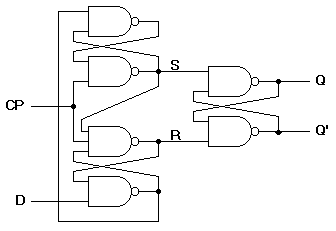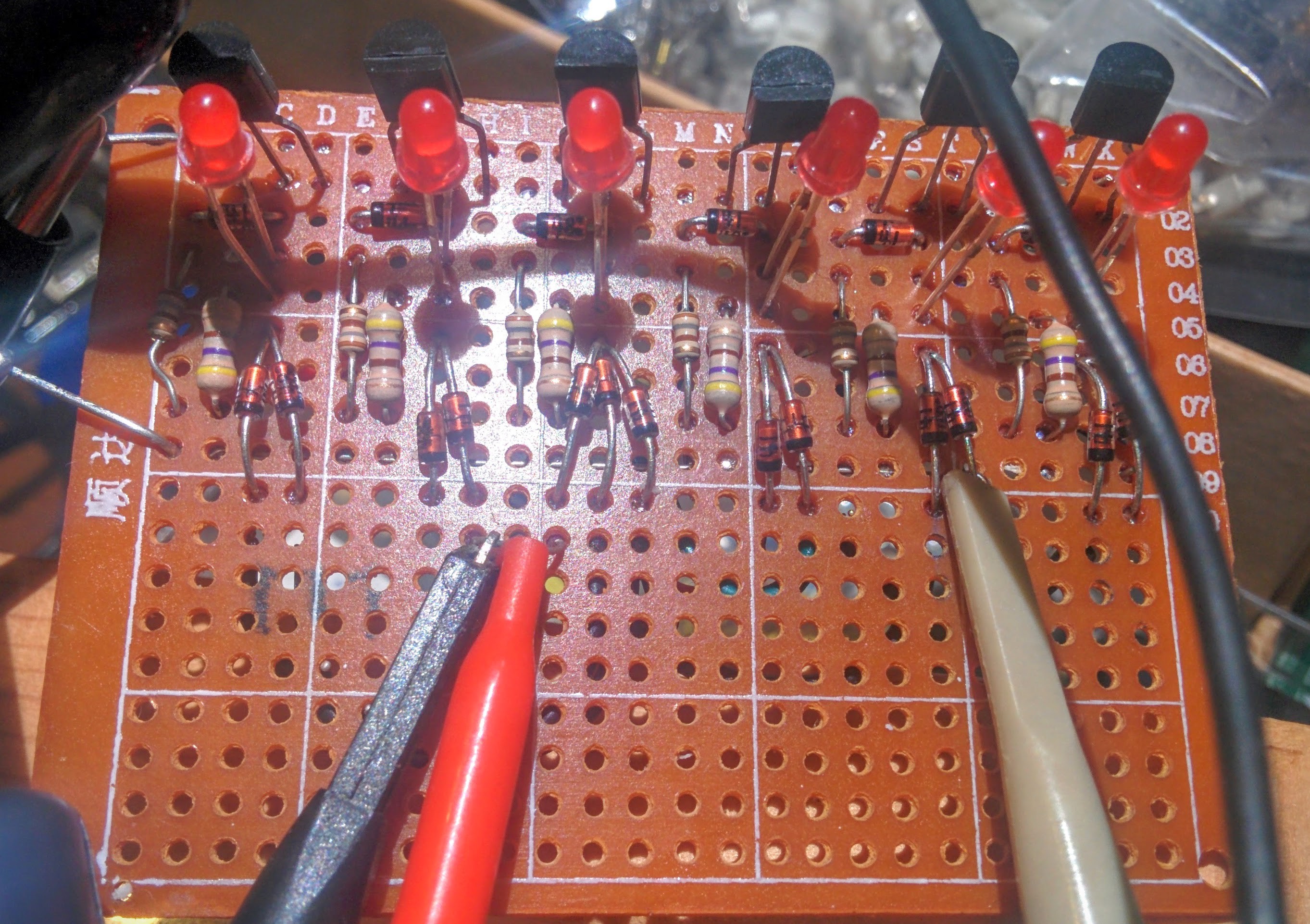Now when I'm back home with a lab a bit larger than a single small desk I soldered up two versions of a edge triggered D FlipFlop.
The general schematics for NAND based Edge Triggered D FlipFlip

The first version used a single LED as the level shifter and a silicon diode as the Bake Clamp. The second version is more standard, using dual silicon diodes as level shifter and a BAT54 Schottky as the Baker clamp.
When simulated in LTspice both version can (when configure as divide-by-2's) can work up to a bit more than 4 MHz. The LED/Si version was just a little bit slower than the 2Si/Sch, just a few % difference.
But in real hardware the story was quite a bit different.
The LED/Si version only worked up to 180 KHz at 3.3 volts, when lowered to 2.5 volts the max speed rose to 210 KHz. Very slow and basically unusable for building the four-phase clock generator for the CPU.
The 2Si/Schottky version did better. 550 KHz at 3.3 volts and 720 Khz at 2.5 volts.
But this still about an order of magnitude slower than simulated. So I need to work on getting the speed up quite a bit before I send for any of the PCBs I've designed the last two weeks. :-(
The LED/Si version

The 2Si/Schottky version

 matseng
matseng
Discussions
Become a Hackaday.io Member
Create an account to leave a comment. Already have an account? Log In.
I don't see any decoupling...
Are you sure? yes | no
The top board was without decoupling. The bottom one got caps soldered between the rails before testing....
Are you sure? yes | no
Just simplifying the layout a bit by putting multiple parts into the same hole. This both saves space and reduces the soldering time. And it was just test circuit on a very small pcb, so I won't keep it for any real use.
Maybe it was the confused layout that made the electrons dizzy and slow here.. :-)
Are you sure? yes | no